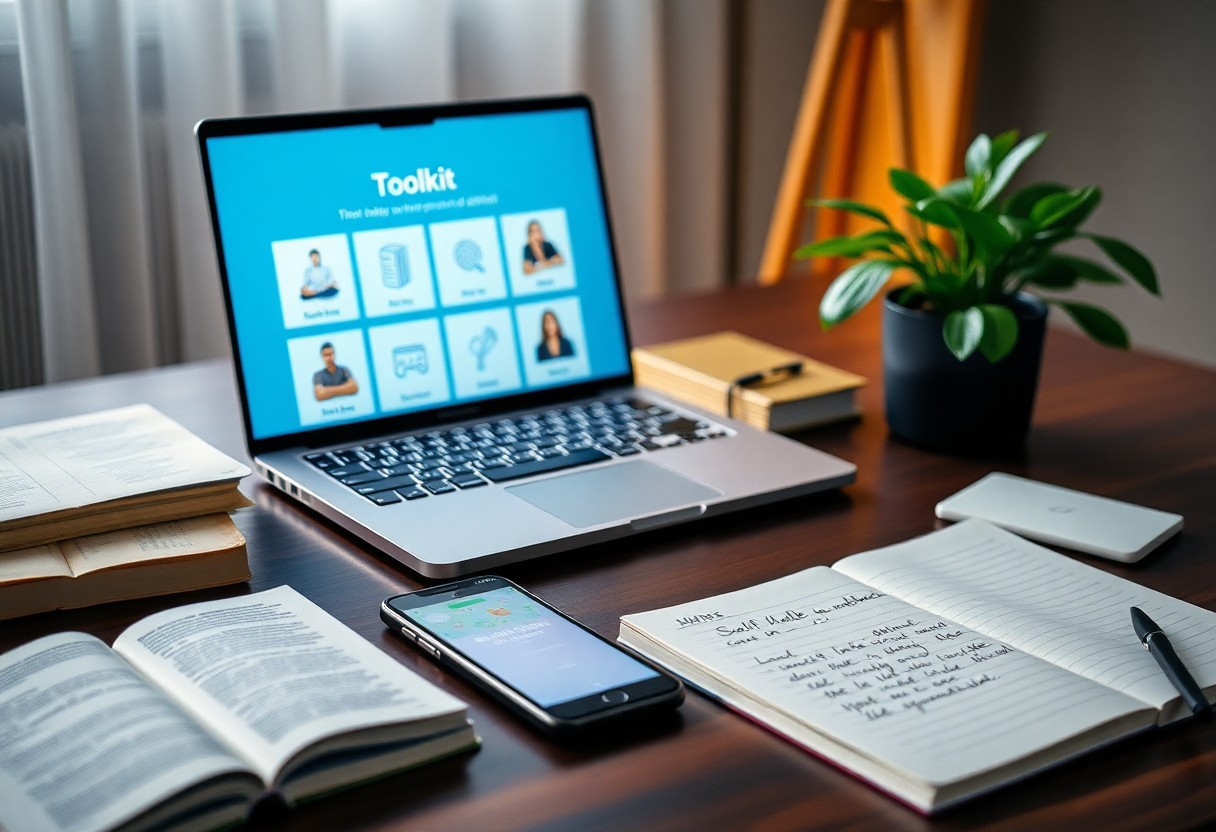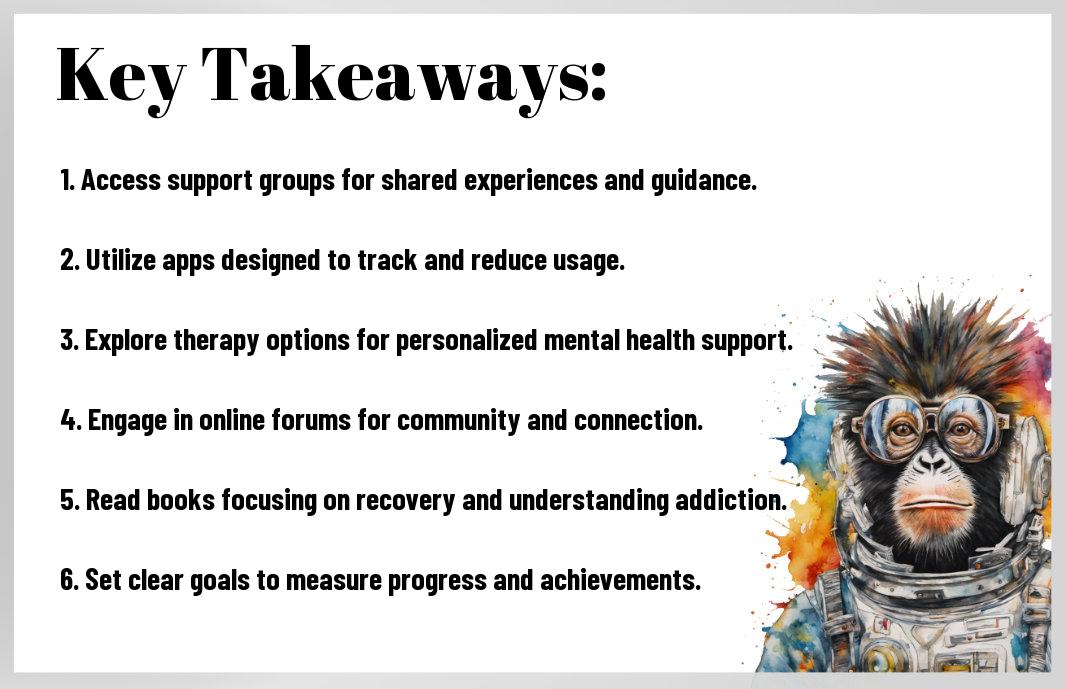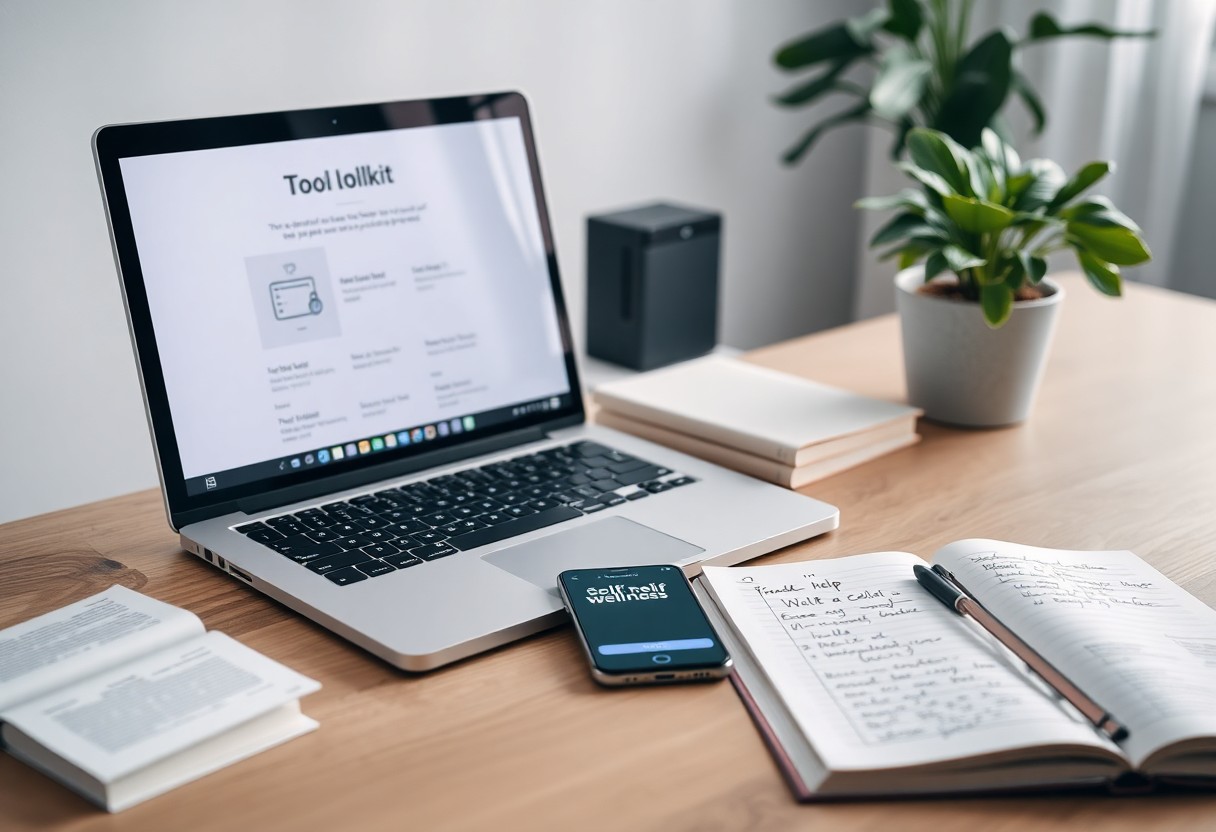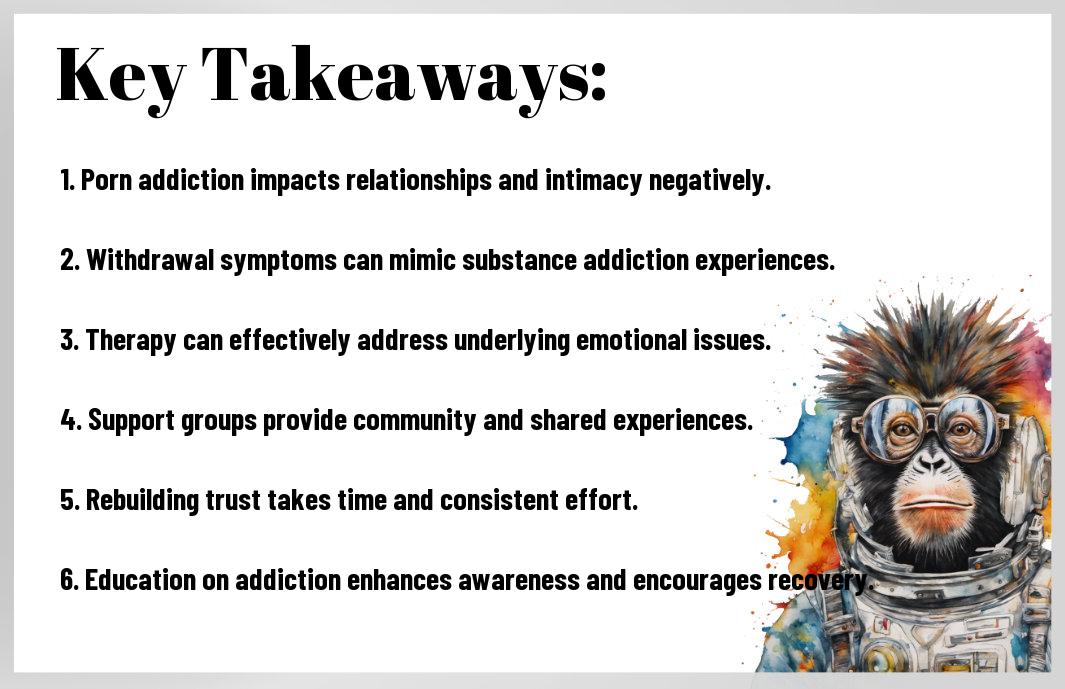There’s a growing recognition of porn addiction and its impact on your life. As you navigate this journey towards recovery, understanding the available resources is vital. In this post, you’ll discover nine necessary tools for 2025 that can help you manage your addiction and regain control. If you’re looking for insights into what constitutes porn addiction, consider exploring What Is Porn Addiction? | Learn The Signs, Symptoms & … for more information. With the right support, change is achievable.
Key Takeaways:
- Understanding what porn addiction involves is the first step to finding effective resources and tools.
- Several apps and digital tools are designed to help individuals track their habits and assess their relationship with pornography.
- Support groups, both online and in-person, can provide community and understanding throughout the recovery process.
- Therapeutic options, including counseling and cognitive-behavioral therapy, are crucial for addressing underlying issues.
- Educating oneself about the neuroscience behind addiction may aid in understanding its effects on the brain and behaviors.
- Resources tailored specifically for younger audiences can help address porn addiction before it becomes a more significant issue.
- Staying informed about the latest research and approach to porn addiction can enhance the effectiveness of recovery efforts.

Understanding Porn Addiction
While many people enjoy adult content recreationally, porn addiction can develop when it interferes with your daily life, relationships, and emotional well-being. It’s important to recognize that this is an evolving issue, often exacerbated by easy access to explicit material. By understanding the characteristics and signs of porn addiction, you can take the first steps toward recovery.
Definition and Symptoms
Understanding porn addiction involves recognizing it as a compulsive behavior where you find yourself unable to control the urge to consume adult content. Symptoms can manifest as neglecting responsibilities, feeling anxious or irritable when unable to access porn, and using it as an escape from emotional pain or stress.
Impact on Mental Health
Beside the immediate effects on your viewing habits, porn addiction can lead to significant mental health issues. It may contribute to increased anxiety, depression, and feelings of loneliness. As you increasingly rely on pornography for gratification, your ability to form intimate relationships can also diminish, leaving you feeling more isolated.
Another significant aspect to consider is the role of porn addiction in distorting your perceptions of intimacy and relationships. As you consume more explicit material, your expectations of what a healthy relationship should look like may become unrealistic. This can lead to dissatisfaction with real-life connections, further worsening feelings of loneliness and anxiety. Understanding these impacts is key to addressing your addiction holistically.

Professional Help
Some individuals struggling with porn addiction may find it beneficial to seek professional help. Therapy can provide a safe environment to explore underlying issues related to addiction and develop coping mechanisms. By working with a qualified therapist, you can gain insights into your behavior and work towards healthier habits that align with your personal goals and values.
Therapy Options
Help is available through various therapy options tailored for addiction recovery. Cognitive-behavioral therapy (CBT) is particularly effective, as it helps you identify and change negative thought patterns and behaviors related to porn use. Other approaches, such as mindfulness-based therapy or psychodynamic therapy, may also be beneficial in addressing deep-rooted emotional triggers that contribute to your addiction.
Support Groups
On the other hand, support groups can be an invaluable resource for those looking to overcome porn addiction. Being part of a community where you can share experiences and insights fosters a sense of belonging and encouragement, helping you stay committed to recovery.
Even small group settings can provide you with a safe space to discuss challenges and successes openly. Support groups often include members who have experienced similar struggles, allowing you to connect with others on a personal level. This shared experience can lighten the burden of isolation and provide motivation to reach your recovery goals. You can find both in-person and online support groups, making it easier to access help when you need it most.
Digital Tools
Keep in mind that digital tools can significantly aid your journey towards overcoming porn addiction. Leveraging technology can provide you with crucial support and resources, enhancing your self-control and accountability. Whether through mobile applications or online communities, these tools are designed to guide you towards a healthier and more fulfilling life in 2025.
Apps for Accountability
The use of accountability apps can be a game-changer in your recovery process. These apps allow you to set goals, track your progress, and even connect with accountability partners who share similar experiences. By providing reminders and encouraging positive habits, these applications help you stay focused and motivated on your path to recovery.
Online Resources
Beside apps, a wealth of online resources awaits you to support your journey. Numerous websites and forums are dedicated to providing information, community support, and expert advice tailored to help you understand and combat porn addiction. These resources can offer insights into effective strategies, coping mechanisms, and personal stories of triumph, all of which can be valuable as you work towards overcoming your challenges.
Tools like online forums, web articles, and educational videos can provide you with a comprehensive approach to understanding porn addiction. You can engage with communities that foster open discussions, share personal experiences, and offer tips that have worked for others. Websites focusing on educational content can broaden your understanding of the psychological and emotional aspects of addiction, equipping you with the knowledge needed to break free. By utilizing these resources, you strengthen your commitment to long-lasting change.

Mindfulness and Self-Help Techniques
Many individuals seeking to overcome porn addiction find mindfulness and self-help techniques invaluable. These practices can help you cultivate awareness of your thoughts and feelings, allowing you to respond to cravings and triggers more effectively. By incorporating mindfulness into your daily routine, you build resilience and foster the ability to engage with your experiences in a healthier, more balanced way.
Meditation and Stress Relief
At the core of mindfulness lies meditation, a powerful tool that can help you reduce stress and regain focus. Regular meditation practice allows you to train your mind, encouraging a state of calmness that combats cravings. By dedicating just a few minutes each day to meditation, you can enhance your emotional regulation and develop a healthier outlook on challenges.
Building Healthy Habits
Relief from porn addiction also comes from building healthy habits that promote a fulfilling lifestyle. By establishing routines that prioritize physical, emotional, and mental wellbeing, you can create a solid framework for overcoming addiction. This includes engaging in regular physical activity, pursuing hobbies, and nurturing meaningful relationships, all of which contribute to better self-esteem and a more positive mindset.
But forming these healthy habits requires consistent effort and self-awareness, as they take time to develop. Start by identifying small changes you can make daily, such as incorporating exercise or setting aside time for hobbies you enjoy. Gradually, as these habits become part of your routine, you will notice a shift in your mindset, reducing the reliance on pornography and fostering greater resilience against potential triggers.
Education and Awareness
All individuals struggling with porn addiction can benefit from a strong foundation of education and awareness. By understanding the complexities of addiction, you can better navigate pathways to recovery. Awareness leads to empowerment, allowing you to identify triggers, recognize harmful habits, and ultimately foster healthier behaviors. Resources such as workshops, webinars, and literature tailored to porn addiction are instrumental in enhancing your understanding and providing support throughout your journey.
Understanding the Science
One key aspect of tackling porn addiction is grasping the scientific underpinnings that contribute to it. Studies reveal that habitual exposure to pornography can physically alter brain structures similar to other addictive behaviors. Understanding these changes can help you realize that this is not just a moral failing but a complex interplay of biology, psychology, and environment. With this knowledge, you can approach your recovery with informed strategies that address both the symptoms and the underlying causes.
Myths and Realities
Below the surface of addiction, many misconceptions thrive that can hinder your recovery. You might hear that porn addiction is merely a phase or that it doesn’t lead to harmful outcomes, but these beliefs often downplay the reality of the struggle. Recognizing the difference between myths and actual facts can prepare you for a more effective recovery journey.
But confronting myths surrounding porn addiction can empower you to seek the help you need. Misconceptions, such as the belief that it only affects a small number of people or that it doesn’t cause emotional distress, can perpetuate feelings of isolation. Understanding the true impact of addiction, including anxiety, depression, and relationship strain, can motivate you to take actionable steps toward healing. Challenging these false narratives enables you to align yourself with strategies that genuinely promote recovery.

Community Support
Not engaging with a community can leave you feeling isolated in your journey to overcome porn addiction. Finding support from others who share similar struggles can be a transformative experience. Community support provides you with an opportunity to connect with people who understand what you’re going through, offering encouragement and motivation along the way. You can seek out online forums, local support groups, or even social media platforms to find a safe space to discuss your experiences and feelings.
Engaging with Others
With community support, you have the chance to engage with others who are navigating similar challenges. By participating in forums or attending local support groups, you can share insights, ask questions, and learn from the experiences of others. This interaction not only fosters connections but also reinforces your commitment to overcoming addiction. Engaging with like-minded individuals can instill a sense of accountability and remind you that you’re not alone on this journey.
Sharing Experiences
Sharing your experiences can be a profound way to foster understanding and connection within your community. Opening up about your journey can help you process your emotions and create a shared sense of belonging. As you share, you may also inspire others who are struggling, giving them hope and insight into their own paths. By telling your story, you contribute to a supportive environment where everyone feels encouraged to move forward together.
Others may find relief and strength in your narrative, as sharing often uncovers common patterns and feelings. Through storytelling, you can cultivate a sense of solidarity, letting those in your community know that struggles are valid and that healing is possible. This reciprocal sharing can enhance your journey, as you learn from others while also allowing them to learn from your insights and progress. Ultimately, sharing experiences enriches the community and reinforces the collective commitment to overcoming addiction.
To wrap up
Conclusively, tackling porn addiction requires a comprehensive approach, and the 9 important tools for 2025 can significantly enhance your recovery journey. By incorporating these resources into your daily life, you can build healthier habits, develop emotional resilience, and gain a deeper understanding of your triggers. Your commitment to change is vital, and these tools can empower you to reclaim your time, enhance your relationships, and foster overall well-being. Embrace these strategies, and take proactive steps towards a fulfilling and addiction-free life.
FAQ
Q: What are porn addiction resources, and why are they important?
A: Porn addiction resources include various tools, strategies, and support systems designed to help individuals struggling with compulsive pornography use. They are important because they provide pathways for recovery, support mindfulness, and promote healthier relationships with sexuality. These resources can help individuals gain insight into their behavior, develop coping mechanisms, and ultimately lead a more fulfilling life.
Q: What types of tools are included in the 9 necessary tools for overcoming porn addiction in 2025?
A: The 9 necessary tools include:
1. Self-help guides focusing on understanding and overcoming addiction.
2. Online support groups for peer interaction and shared experiences.
3. Mobile applications designed to track usage and promote positivity.
4. Educational webinars discussing the impact of pornography on mental health.
5. Therapy resources including directories for professionals specializing in addiction.
6. Mindfulness practices to enhance self-awareness and emotional regulation.
7. Goal-setting worksheets that help define personal recovery objectives.
8. Real-life success stories to inspire and motivate those in recovery.
9. Community outreach programs offering local support and advocacy.
Q: How can I find a support group for porn addiction?
A: To find a support group for porn addiction, consider searching online directories that list local and virtual groups. Resources such as Sex Addicts Anonymous (SAA) or the NoFap community provide structured support and encouragement. You can also inquire with mental health professionals who may have recommendations for local meetings or online forums suitable for individuals facing similar challenges.
Q: Can mobile applications really assist in overcoming porn addiction?
A: Yes, mobile applications can be effective tools in addressing porn addiction. Many apps provide features like usage tracking, motivational reminders, and resources for education and support. They often include community forums where users can share experiences and strategies. By enabling users to monitor progress and stay accountable, these applications can foster healthier habits and promote recovery.
Q: What role does therapy play in overcoming porn addiction?
A: Therapy provides a safe and structured environment for individuals to explore the underlying causes of their porn addiction. Mental health professionals can help identify triggers, teach coping strategies, and facilitate personal growth. Different therapeutic approaches, such as cognitive-behavioral therapy (CBT) or group therapy, can be tailored to meet individual needs, offering support and guidance throughout the recovery process.






